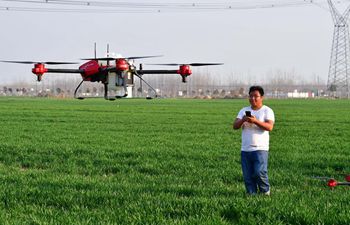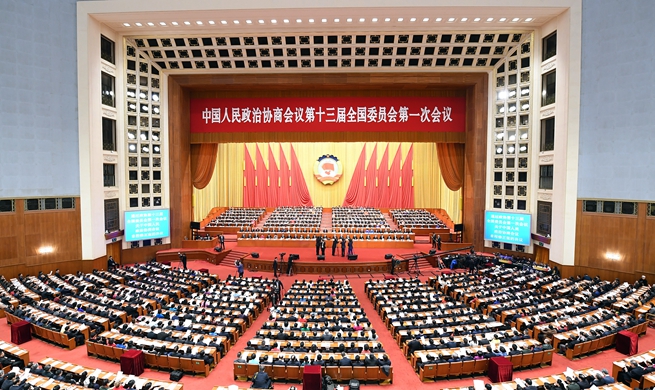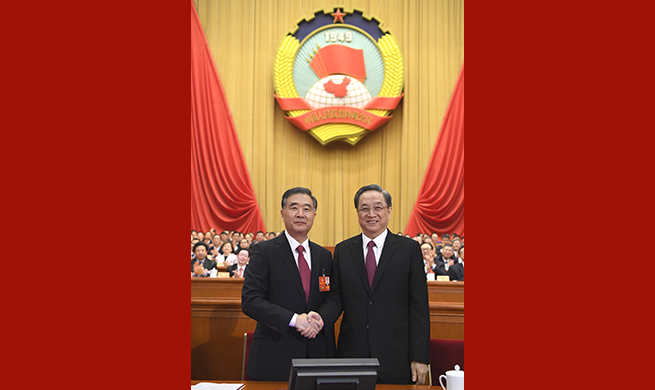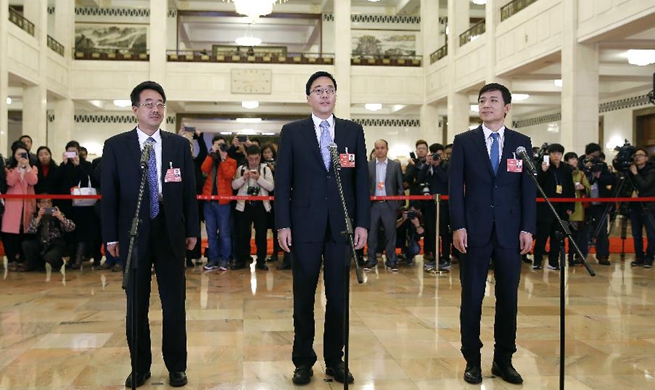ZHENGZHOU, March 15 (Xinhua) -- Thanks to 158 bridge bearings manufactured in a military factory in central China, the world's longest sea bridge sits majestically above the most bustling waters in southern China.
The bearings, or "joints" that connect the pier and bridge body, are crucial to the quality and lifespan of the 55-kilometer Hong Kong-Zhuhai-Macao Bridge situated in the Lingdingyang waters of the Pearl River Estuary.
The supplier of the joints, Luoyang Sunrui Special Equipment Co., is a subsidiary of Luoyang Ship Material Research Institute of China Shipbuilding Industry Corporation, which provides technological support for Chinese naval warships.
Many technologies developed by the institute have been applied to several national key projects, such as the record-breaking Jiaolong deep-sea manned submersible, China's first aircraft carrier Liaoning, and the country's first manned space docking between Shenzhou-9 spacecraft and the country's first space lab Tiangong-1.
Due to deeper military-civilian integration, those technologies have been widely used in civilian areas, including major infrastructure projects, wind turbine blade, and affordable medical apparatus and instruments such as heart stent.
"Over 90 percent of our production value now comes from civilian goods," said Wang Guoyu, secretary of the Party committee of the institute.
As China continues to implement the military-civilian integration strategy, an increasing number of military enterprises have been applying their cutting-edge technologies to manufacturing civilian products. Once mysterious military technology has become a part of people's daily lives.
Haiying Special Materials Company uses one-millimeter-thick nanometer aerogel as a thermal insulation material for its winter boots. The material was used on the gas pipelines of Long March-5 rockets and microthermal lockers of the Tianzhou-1 cargo spacecraft.
China Aerospace Science and Technology Corporation (CASIC) has partnered with the National Library of China and National Ancient Books Protection Center to apply astronautical technologies to the protection of ancient books.
According to Gao Hongwei, chairman of CASIC, more than 2,000 aerospace technologies have been applied to various sectors of the national economy, and made tremendous contributions to social development.
According to the State Administration of Science, Technology and Industry for National Defense in December, 70 percent of products manufactured by military enterprises in China were for civilian use.
"China's defense industry has accumulated a lot of advanced technologies and high-end talent over the decades, but many achievements have not been adopted in civilian areas yet," said Zhang Liangrui from the administration. "China will introduce more measures to promote military-civilian integration, to contribute to national industrial upgrading and economic development."



















